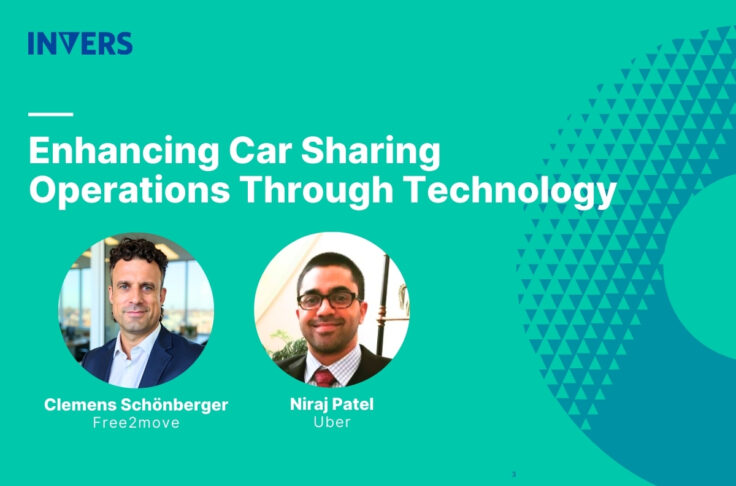The Future of Mobility is with the Next Generation
Summary
Generation Z still relies on word-of-mouth for purchase decisions, yet they are not as interested in buying a vehicle. Instead, they have needs surrounding individuality and spontaneity. Shared mobility services need to adopt to this generation’s needs early.

Experts in the transportation space enjoy talking about what the future of mobility is going to look like, and what our transportation habits will look like in 5, 10, and even 50 years. Take a moment to imagine what life would be like to not worry about purchasing vehicle insurance, dealing with congestion, and just getting around whenever you want.
In an ideal future, mobility will become a commodity, one which is accessible by everyone and with minimal physical or monetary restrictions. Being alone in a vehicle will be rare, as the concept of sharing will become commonplace and socially preferred. These scenarios are not idealistic, but instead necessary in order to ensure a liveable city for future generations. But how do we get there? By working with the youth – Generation Z.
Educating the Population
We are all creatures of habit, and getting a 37 year old individual to change how they get around will be challenging. The desire to own a personal vehicle has been instilled in humans since the advent of the industrial revolution. As a result, it has been a difficult task to make shared mobility adoption more widespread, but is nonetheless critical to address current congestion issues and population growth.
The shared mobility industry needs to draw attention to Generation Z, the post-millennial generation. This generation is at most 19 years of age, and is arguably more easily influenced than other generations given their life stage1.
One of the best opportunities to change the way people get around is to shape the right foundational behaviour. Typically, those part of Generation Z do not yet own a vehicle, are dependent on others, and may be resource-strapped – an optimal audience to target. They will also be impacted the most by changes in the mobility industry given their age, making it even more important that they practice the right behaviours.
Interestingly, these individuals have already begun expressing themselves differently compared to previous generations, even millennials. This makes them an interesting cohort to learn more about given their impact on the future of mobility.
Behavioural Highlights
Even though Generation Z has grown up with technology, for 48% of them, word-of-mouth still prevails as the source of choice when it comes to making purchase decisions1. With friends and family still a reliable source of information, the widespread adoption of new mobility relies on effective messaging about the benefits and options available. Building on word-of-mouth is online reviews, another source 30% of Generation Z use towards decision making1.
In general, Generation Z prefers products over experiences2, with females preferring to spend on experiences more than males1. The desire for products may be higher but does not mean a guaranteed purchase; instead, Generation Z is less inclined to buy than Millennials2. Possibly related, 20% of Generation Z believe debt should be avoided at all cost1.
Ownership and Usage Preferences
While these questions weren’t specific to vehicle ownership, these behaviours are indicative of a shift in ownership and usage preferences. Generation Z likes products but may not be willing to or be able to own them as desired. As we begin to dive deeper into the opportunities and obstacles shared mobility operators face with this generation, we will begin to see the need for dynamic, constant changes in this industry.
One question in Deloitte’s study about vehicle preferences identified Generation Z’s desire for increased safety. The study found that regardless of age, safety was a priority when choosing transportation options. For Generation Z, they were willing to pay more for features that reduces risk of collisions and informs the driver of dangerous situations3. With safety as a concern, shared mobility operators need to address this to get people out of private vehicles.
Of course, this is just one of many needs that Generation Z have made evident so far. While many are still too young to own or even drive a car, their sentiment towards vehicle ownership, what it means to them, and what they are looking for is being shaped through what they know. Now is the time for shared mobility to garner more visibility in order become the transportation option of choice for more people.
Filling the Gap
Fortunately for the shared mobility industry, 64% of Generation Z has questioned their need to own a vehicle due to other transportation options such as ridehailing being available3. This openness to new modes of transportation highlights the opportunity to guide this generation towards using more shared mobility services. To do so, Generation Z needs to understand how shared mobility works, and shared mobility operators need to be able to meet their needs.
Individuality
Generation Z is more familiar with social media than any other generation, and arguably has the most public personal brand image4. As a result, there is constant pressure to find themselves in a brand, product, or service. In the traditional car ownership world, a car would help extend one’s personality. If shared mobility operators want to reduce the demand for vehicle ownership, this channel of showcasing individuality should be addressed.
One opportunity is to provide a sense of belonging. By building a strong community, shared mobility has the potential to help Generation Z identify who they are or want to be. This is more than brand loyalty; it’s about activating individuals to further improve the product or service, and unifying them to feel heard and understood.
On Demand
As a result of services like Spotify, Amazon Prime, and food delivery platforms, shared mobility services need to be available almost immediately when needed4. Users are prioritizing reliability and speed in deciding what company to use, turning these services more and more into a commodity. This is great for users but not necessarily for shared mobility operators.
Nonetheless, the on demand upbringing and fluidity of information has made Generation Z more aware of transportation options beyond vehicle ownership. Time is also more available for this group, who no longer have to dedicate time to shopping in stores or buying groceries4. Instead, time is in their control, possibly squeezing in a few extra minutes to walk around the block for a carshare.
Shared mobility is growing, but is not always able to meet the on demand needs that is available with a private vehicle. Urban cities may be viable places for Generation Z to change their transportation habits, but there needs to be greater adoption and more options. Shared mobility operators face the dilemma of either increasing supply in hopes of greater demand, or waiting for more demand before increasing supply. The right balance of risk, profitability, and social good is yet to be identified.
Value-Adding
Generation Z has grown up inundated with information about increasing cost of living, rising debt levels, and constant inflation. With the excess sharing of experiences and products via social media, consumerism has also increased the desire to have more. As a result, it wouldn’t be surprising if Generation Z grows into a price sensitive generation, forcing products and services to add more value than just their standard offering.
In shared mobility, messaging has typically focused on being pay-as-you-go, enabling people to control their transportation costs and have more flexibility in choosing other options like walking or public transportation. While this may not be enough of a convincing reason, shared mobility operators are on the right path to influencing the mobility patterns for Generation Z. As the demand for constant improvements in products and services grow, shared mobility services need to continuously evolve to meet changing needs as well.
The Future of Mobility – Conclusion
In the future, vehicle travel will still exist, but it will need to be through shared rides and shared vehicles. Fortunately, there are many factors already influencing the next generation’s adoption of the future of mobility. Thanks to the sharing economy, people are exposed to the benefits of sharing, whether that be houses, tools, or cars. In addition, there is a growing number of options on how someone can get around, and there is more evidence on the negative impacts of personal vehicles on the environment and the community. Shared mobility has reshaped the way people live, but the problem is that only a small fraction of people are taking advantage of these new options.
The future of mobility is only going to be better than its current form if more people adopt it, regardless if it is carsharing or scooter sharing. Education is part of the solution, but more can also be done. Shared mobility will continue to grow and should become the obvious choice of travel for intra-urban mobility. As Generation Z further realizes the constraints of vehicle ownership, flexible and purpose-driven mobility options need to be readily available in order to shape a solid foundation for the future of mobility.
Stay in the know! Sign up now to receive email updates on the latest shared mobility insights and reports or our quarterly newsletter.
References
- The Center for Generational Kinetics – The State of Gen Z 2017
- Vision Critical – Generation Z Characteristics
- Deloitte Insights – The Race to Autonomous Driving
- Coresight Research – Gen Z: Get Ready for the Most Self-Conscious, Demanding Consumer Segment


